This series contains 5 animated historical maps. For a preview, please consult the map below:
▶ Humans colonise the planet
Subscribe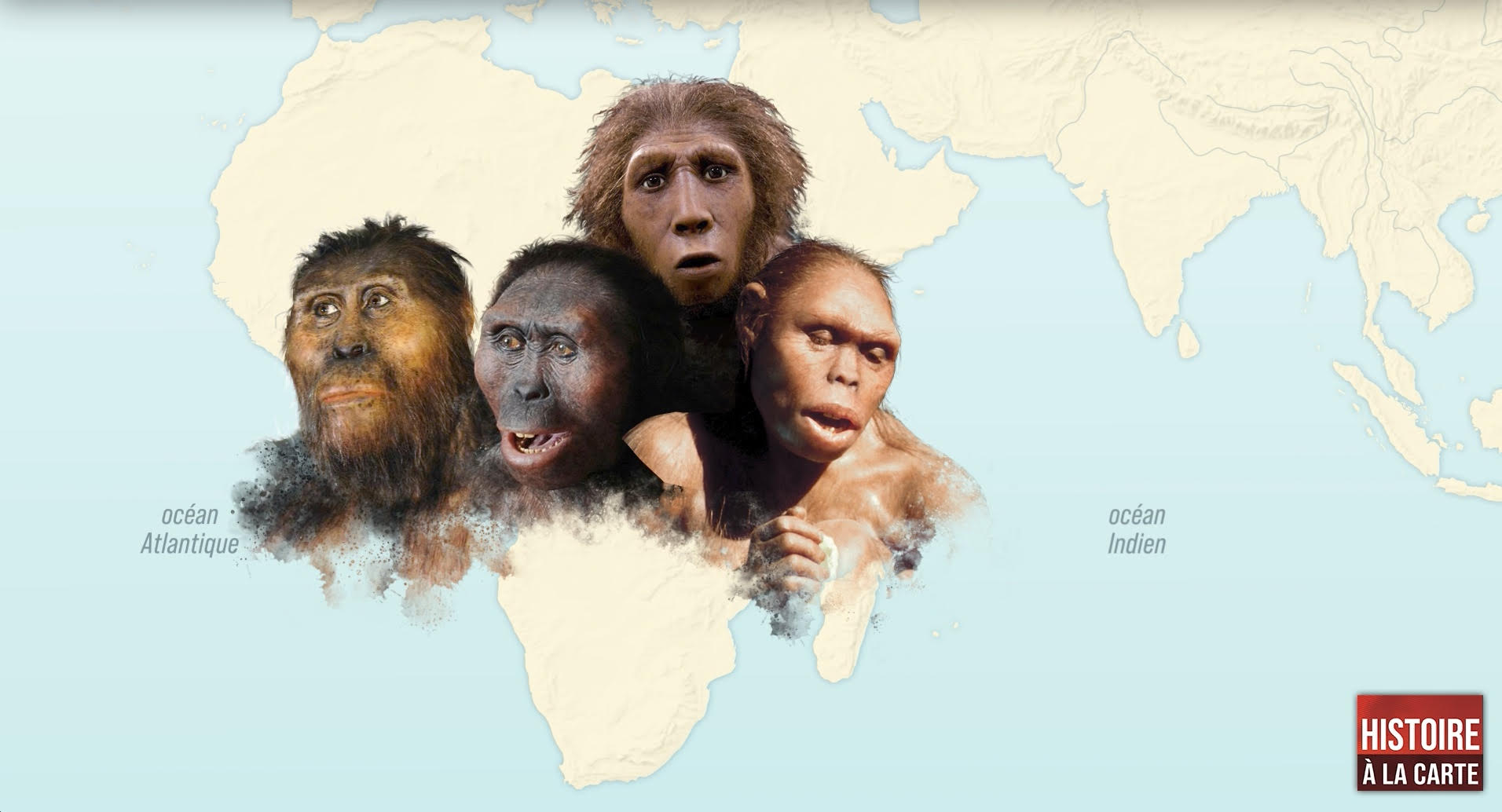
Prehistory
With palaeontology, archaeology, genetics and climatology, we are able to have better understanding of the prehistoric era: colonisation of the planet by several species of the Homo genus, and then the Neolithic revolution which followed the invention of agriculture and the sedentarization of Homo sapiens.
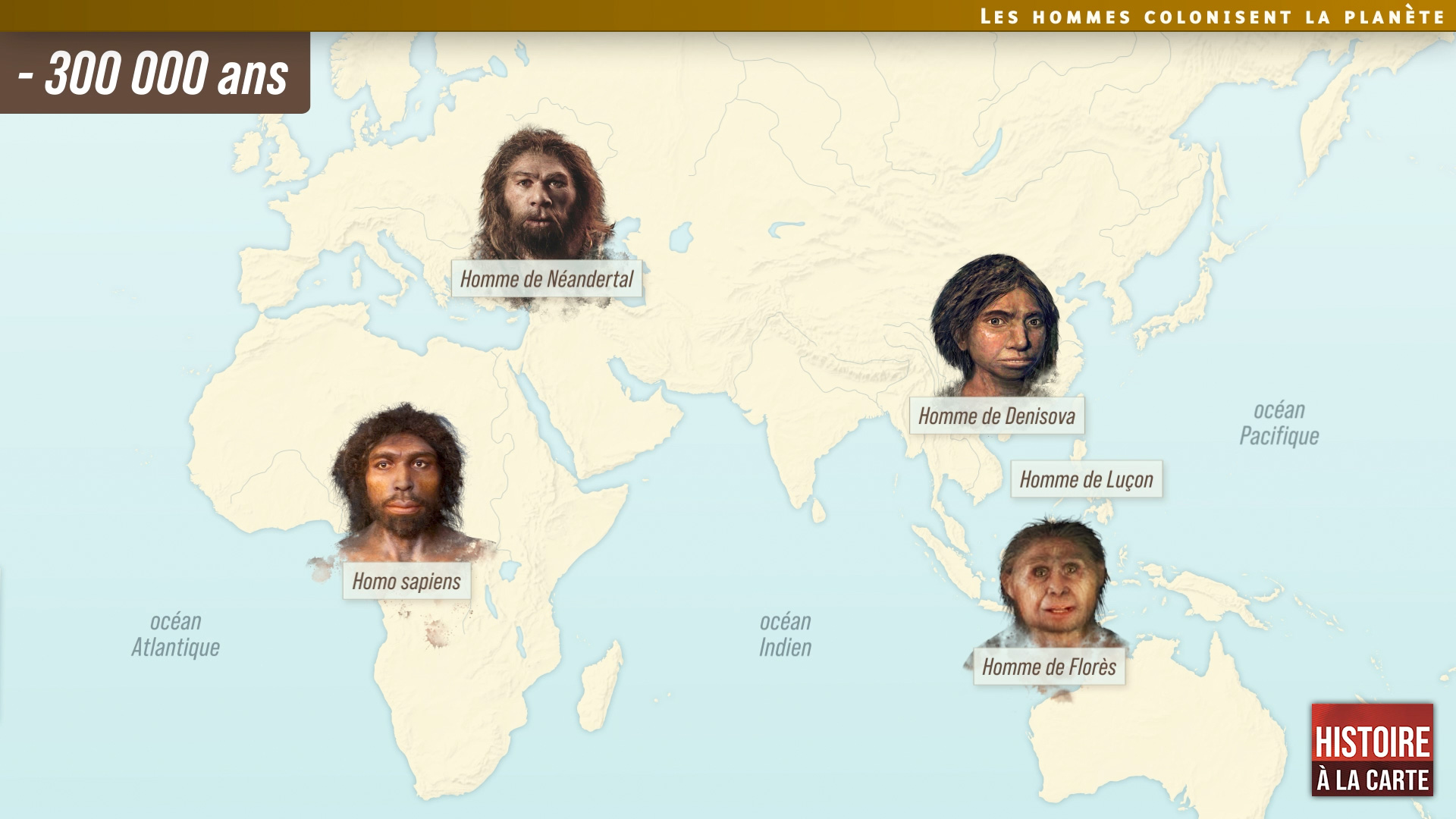
Humans colonise the planet
Full video
About 2 million years BP, the first groups of the homo genus moved away from Africa and spread over a large area of Southern Eurasia. Two hundred thousand years ago, Homo sapiens migrated from the African cradle and colonised the planet.
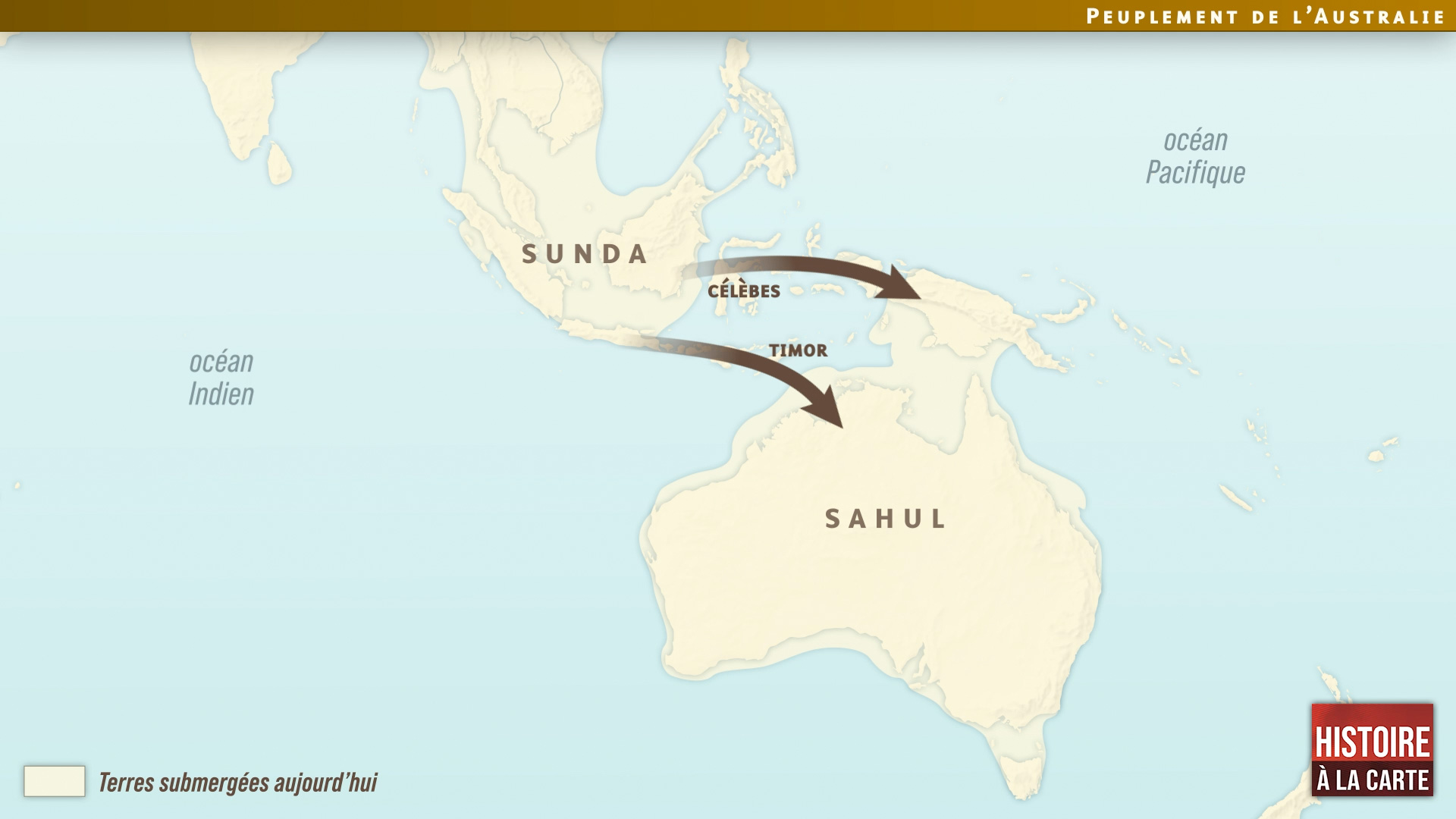
Settlement of Australia
Video extract
Following departure from Africa, Homo sapiens migrated eastwards through the southern areas of Asia. Sixty thousand years ago, they reached Sahul, the name given to the continental block covering Australia, New Guinea and Tasmania.
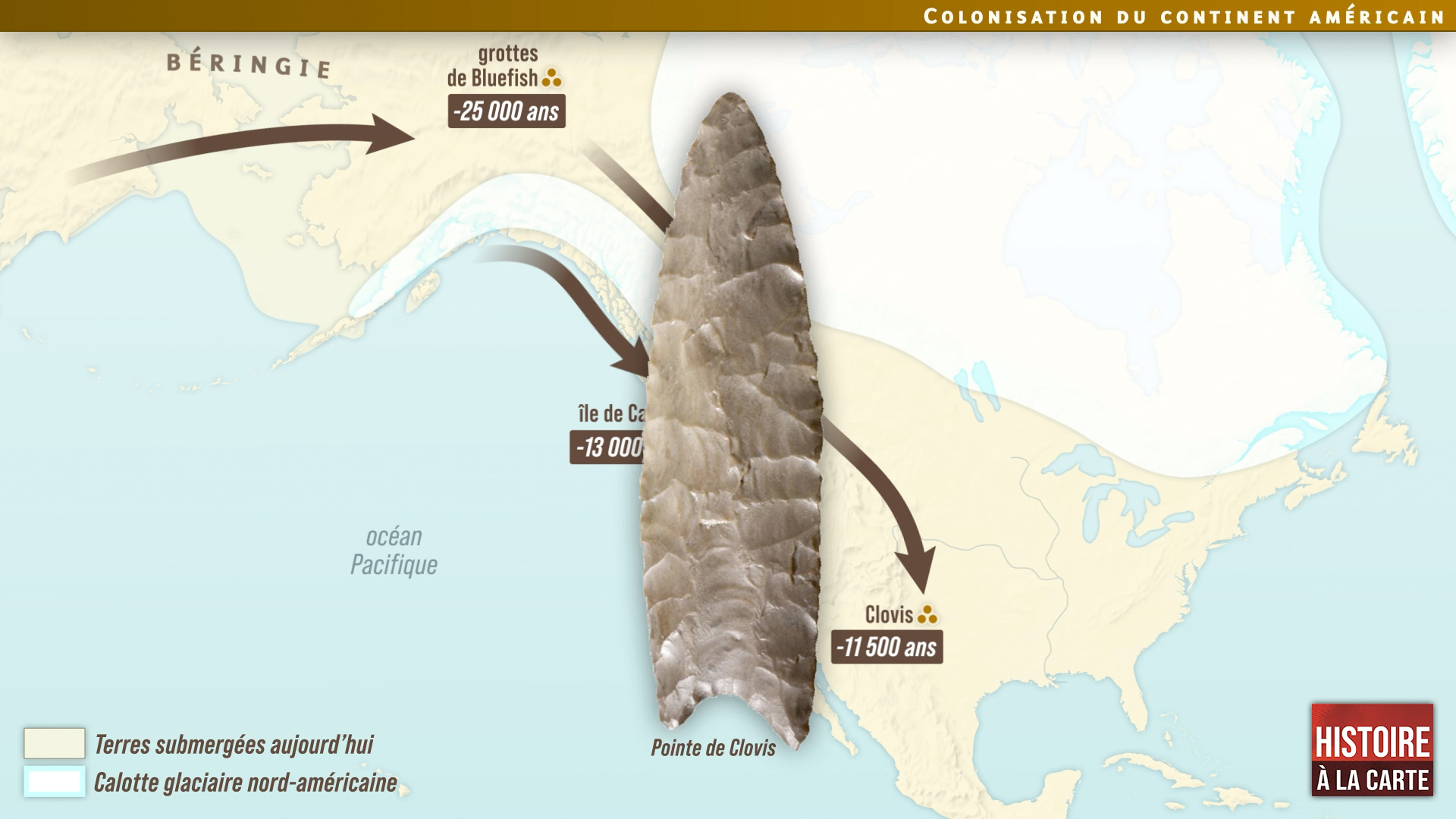
Colonisation of the Americas
Video extract
There is evidence of the presence of Homo sapiens in Eastern Siberia dating back to 35,000 BP. At that time, the Eurasian continent and the American continent were connected, because of the low sea level, by a wide stretch of land known as Beringia. This region was visited by several waves of hunters-gatherers following the herds of large herbivore animals, such as caribous and mammoths.

The invention of agriculture
Video extract
With climate warming which came after the last Ice Age, several groups of hunters-gatherers became sedentary and began to domesticate nature. They cultivated the wild plants they were already eating and raised animals that they used to hunt.
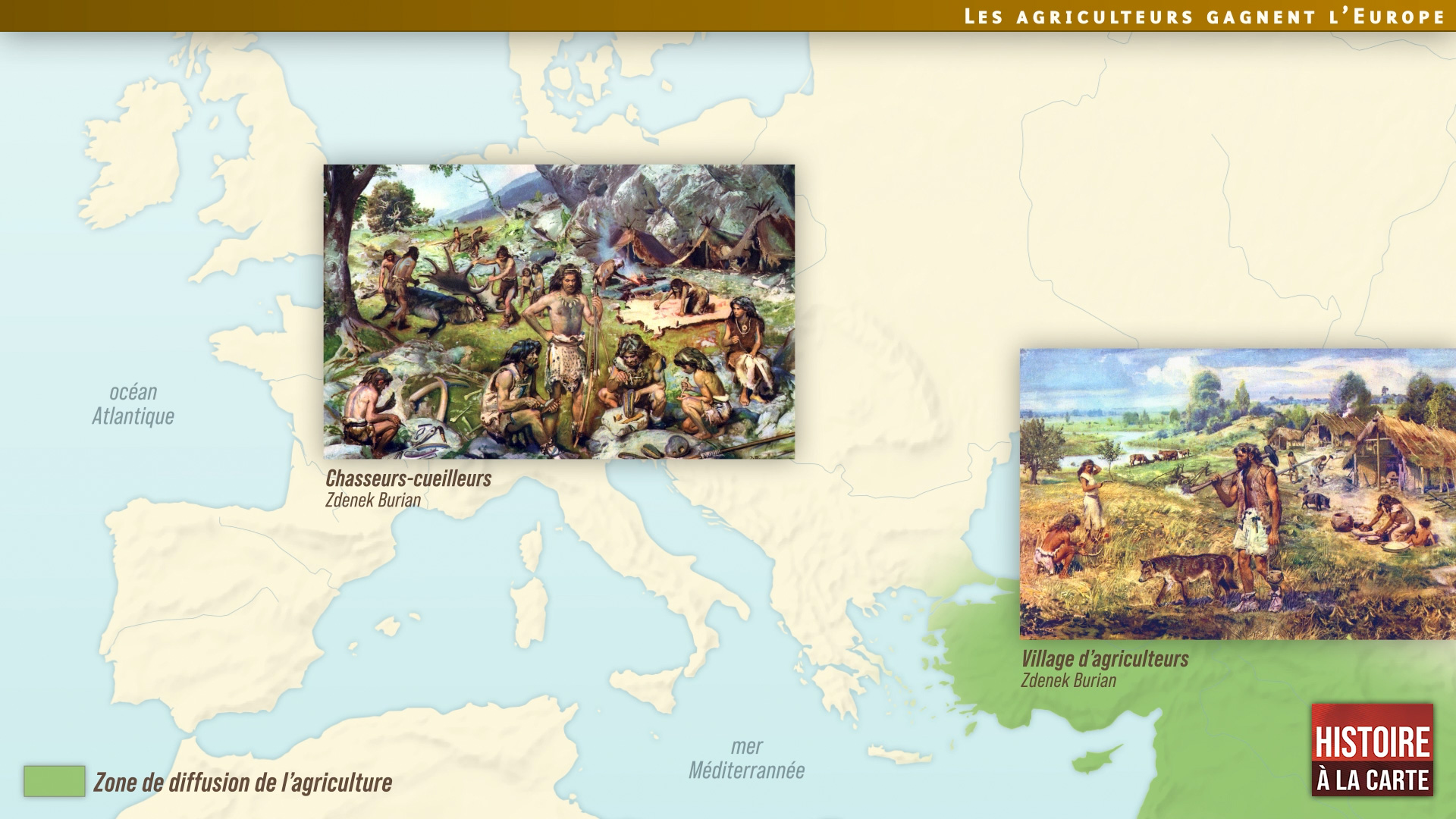
Farmers reach Europe
Video extract
The spread of the Neolithic Revolution in Europe was due to the westward migration of farmers from the Middle East. The chronology of this migratory movement is well known, thanks to the huge number of archaeological sites that have been studied throughout Europe.


